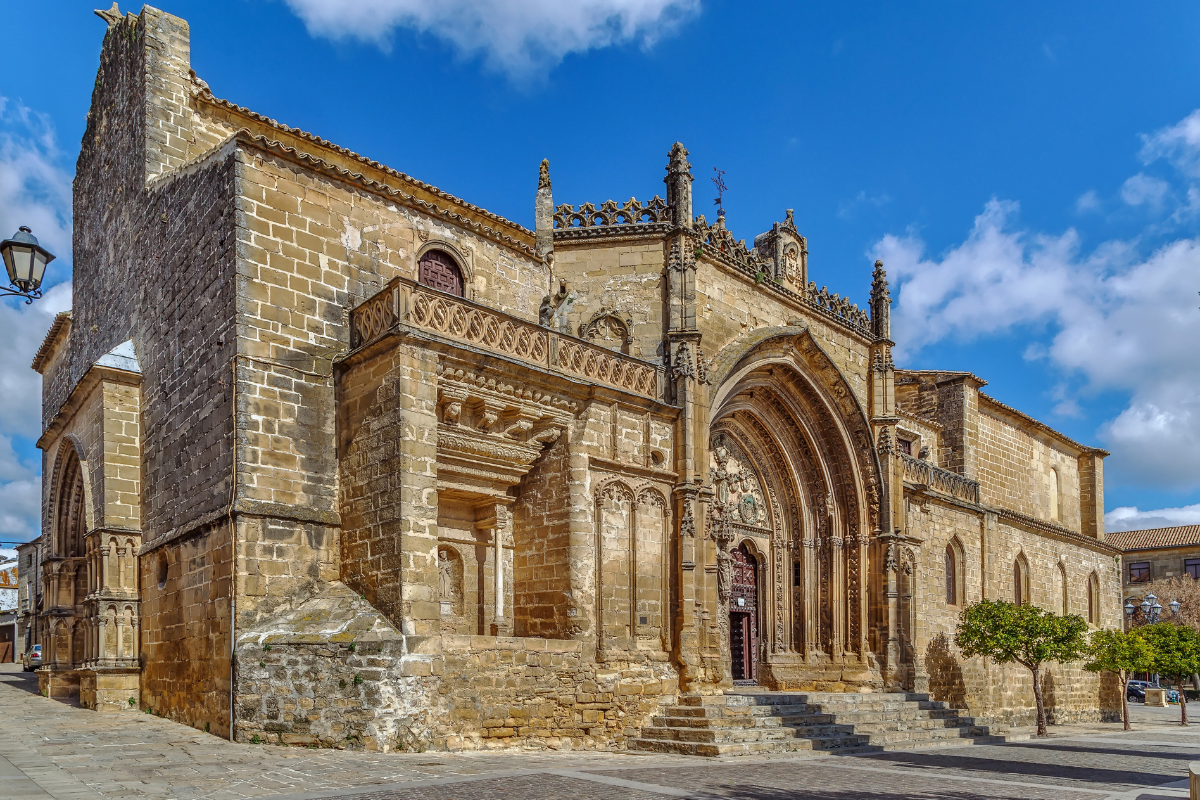Today we take you on a short tour of two amazing Andalusian towns, Úbeda and Baeza, which were declared UNESCO World Heritage Sites in 2003. When spending your holidays on the Costa del Sol, you must visit them!
“City of a Thousand Hills”
Úbeda is a historic town in southern Spain, located on the picturesque hill of La Loma, in the Jaén region, north of Granada. It is undoubtedly one of the region’s most beautiful and recognisable places. Despite the fact that it has a population of less than 35,000, Úbeda regularly attracts large numbers of tourists from Spain and around the world.

The town was officially founded in the 9th century during the Moorish rule of the Iberian Peninsula, although archaeological research indicates that its history goes back as far as 6,000 years. Despite its rich history, Úbeda is known today mainly for its beautiful Renaissance buildings, dating back to the 16th century. Influential in the city’s development at that time were the noble families of Castile, who, thanks to their strong position in the apparatus of the Kingdom of Spain, made Úbeda the capital of the Spanish Renaissance. It is thanks to the patronage of Francisco de los Cobos y Molina, who was Secretary of State to Emperor Charles V, that when we come to Andalusia today we can admire some of the best-preserved buildings representing Renaissance architecture, which include:
- Plaza de Vazquez de Molina – an excellent example of Renaissance architecture in Spain, around which there is a historic complex of buildings.
- Church of the Saviour (Sacra Capilla del Salvador) – one of Ubeda’s most famous buildings, designed by Diego de Siloé. Particularly impressive are its facades carved in stone.
- Renaissance Palace of the Marqués (Palacio del Marqués del Donadío) – located in the centre of Plaza de Vasquez de Molina, built at the behest of Fernando Ortega in the 16th century, the palace is a perfect representation of Spanish architecture during the Renaissance.
- The 15th-century Casa Mudéjar – now home to the Archaeological Museum, which houses, among other things, finds from the period of Roman rule in Andalusian lands.

“Happy City”
Ten kilometres from Úbeda is another Andalusian town that can be described as a ‘pearl of the Renaissance’ – Baeza. This small Andalusian town enchants all visitors with its buildings in a style characteristic of the Renaissance period, for which the Spanish architect Andrés de Vandelvira is responsible.
Baeza’s history dates back to Roman times, when it was called Baetia, meaning ‘happy town’. Over the following years, like many other Andalusian and Spanish towns, Baeza passed under Visigoth and Moorish rule until, in 1227. – as the first Andalusian town – was recaptured from the hands of the Arab people during the ongoing Christian reconquest.

Although Baeza’s first heyday was under Moorish rule, unlike other cities such as Granada or Córdoba, it has become famous as a city with perfectly preserved Renaissance architecture, which can be found here at every turn.
When going on holiday to Andalusia, you absolutely must visit this town! The must-see places in Baeza are:
- Palacio de los Marquesos de Jabalquinto – Renaissance Palace of the Marquesas, built in the 15th century, which now houses the City Council.
- Cathedral ofthe Nativity of the Blessed Virgin Mary (Catedral de la Natividad de Nuestra Señora de Baeza) – a cathedral built in 1227, standing on the site of an earlier Muslim mosque. After the area was recaptured from the Moors, the cathedral served as the seat of the bishopric.
- Plaza del Pópulo – also known as ‘Lions’ Square’, which features a historic fountain with a statue of Princess Imilce – Hannibal’s wife.
- The Old University of Baeza – a university building, built in the 16th century, whose most important element is the patio. The first rector of the University was St John of Avila.
The diverse faces of Andalusia
Andalusia is undoubtedly one of the most interesting regions in Spain, showcasing a cross-section of Iberian history. There are Roman ruins such as the Puente Romano bridge in Marbella and the ruins of Baelo Claudia, beautiful Moorish palaces such as the Alhambra in Granada and Renaissance pearls such as Úbeda and Baeza. The abundance of interesting places to visit, the excellent climate and the delicious cuisine make Andalusia a destination you simply want to return to, or even live here permanently!


